|
Our first Scilly Skies of 2023, to coincide with our public opening - regularly on Tuesday evenings and Friday afternoons. Here's what we're looking at in the skies this month - enjoy the dark while it lasts! Download as a PDF here.
0 Comments
Stargazing season in the UK is now well underway, with darkness falling before bedtime! Here's what we're looking at in the night sky this month. Download as a PDF here.
Stargazing season begins in earnest, as earlier, darker skies make for more favourable viewing. Here's what we're looking at in our skies this month. Download as a PDF here.
Darker skies than last month... and lots to enjoy! Here's what we're looking at in our dark island skies this month. Click here to download this document as a PDF.
A version of this article appeared in the last ever (!) publication of Scilly Now & Then magazine, out in July 2022. We would like to thank Beth Hilton for her support for us from the very beginning - before we even had an observatory - and we are honoured to have been part of this brilliant local publication for its last few years.
June and July mark astronomy’s ‘low-season’, as Scilly’s glorious long sunlit days dominate over short, late, sometimes barely dark nights. Stargazing on Scilly in the summer months is really limited to 11pm and onwards – after midnight is your best bet! True, it may not get completely dark before you head to bed, but if you’re enjoying the evening outdoors, the hours after the late sunset pose an interesting time to ‘look up’: you’ll notice the first, brightest stars pop out – first you may see bright orange Arcturus, then pale Vega, almost directly above, before one by one, the next bright few appear as their constellations take shape. It’s a good way to familiarise yourself with well-known named stars. It’s the perfect time, too, to spot noctilucent clouds – these high-altitude clouds can appear dazzlingly bright, electric blue in the sky, up to 2 hours after sundown (or before sunrise) and above the northwest horizon. We’ve very well placed for the opportunity to see NLCs on Scilly, with such low, open horizons and zero light pollution. Scilly Dark Skies Week, 1-7 October 2022 We had such a great time last year that we’re running it again! Scilly Dark Skies Week will return to St Martin’s between 1 and 7 October 2022. The week of grassroots astronomy includes nightly talks and daily practical workshops. This year the week coincides with a full Moon, so several talks and observation sessions are devoted to our nearest celestial neighbour. The observatory will be open every evening for ticket holders – and being October, it will be dark nice and early! Returning speakers include Cornwall-based astronomer extraordinaire Carolyn Kennett (whose fascinating talk on archeo-astronomy, the connection between Cornwall and Scilly’s ancient monuments and the night sky was a highlight of last year’s event), along with COSMOS regulars Professor Ian Morison and Mark Holmes. New speakers this year include the Open University's Professor Andrew Norton, a regular St Martin's visitor who just happens to have once been vice-president of the Royal Astronomical Society; and multi-award-winning Astronomy Photographer of the Year, Martin Lewis, who specialises in planetary imaging. Tickets are £175 for the week, which includes daily workshops and nightly talks, plus guided stargazing. Alternatively you can attend a single talk or workshop for £20. There’s more information about Scilly Dark Skies Week on our website – cosmosscilly.co.uk. And as ever, get in touch at [email protected] if you have any questions about visiting us or the night sky in Scilly. And do keep sending us your photos! The one on at the top of this article was sent to us by observatory visitor David Emerson, who took this stunning long exposure in May, outside St Martin’s church. Here's what we're looking at in our skies this month. Bear in mind that because it's June and we're near the summer solstice, it won't get dark here until very late - we're talking about 11pm or so!
Here's what we're looking at in the skies this month (lots for very early risers as the nights get shorter!) Download as a PDF here.
Back for 2022! Here's what we'll be looking at in our skies this month. Download as a PDF here.
Winter quietness has descended on St Martin’s, but our pristine night skies have a lot to offer. Lovely, dark evenings mean for more sociable stargazing, and it’s the chance over winter for our island members to come together to explore the night sky at a leisurely pace.
Whether we’re looking at a specific constellation, deep sky object, Moon or planet, we’ll reconnect with what brought us together as a collective in the first place: a shared appreciation wonder of Scilly’s night skies and a desire to learn more together. The super-stunning Gemenid meteor shower reaches its peak activity overnight on 13-15 December. Often seen as the king of meteor showers, and an annual highlight for family observing, you can expect up to 150 bright streaks of light per hour. The one downside this year is a bright Moon which will affect seeing. Your best bet to catch a falling Geminid this year is to get an early night and set your alarm for 2am, when you’ll still have several hours of December darkness. A deckchair or sun-lounger (and something warm in a flask) will be your friends here. Our solar system’s planets are beautifully placed to observe this month, with the chance to see several (up to 7 – as you’ll be standing on one!) together at once. Towards the end of the month, close to our expansive flat SW horizon, inner planets Mercury and Venus appear close. On 28 December, cast your gaze upwards and you’ll also be able to see Saturn and Jupiter with the naked eye, and with a telescope Neptune and Uranus! If you want to spot Mars, you’ll have to wait till the morning; it’s tantalisingly close to its similar-looking red giant Antares. Once again ‘tis the season to be thinking of gifting for New Year hobbies. We’re frequently asked advice on buying telescopes. Dusting off the annual advice: it’s a bit like buying a car; depends how much you’ll use it and how far you need to go. Probably the very first question you should ask yourself is (if it’s not ‘where’s my nearest observatory and how do I get involved?’): ‘could I get more out of a good book or a pair of binoculars first?’ Several years down the line, the advice to join up with others rings more true than ever. While there is a price tag on astronomical equipment, lots of tools for astronomy are available for free, that includes the knowledge of others! Join – help build – a team and learn together, it’s more rewarding than spending a lot and going it alone. Wishing you a happy, clear-skied Christmas and New Year, and we look forward to seeing you on St Martin’s soon. |
BYCharlie Payne POSTS
September 2024
|

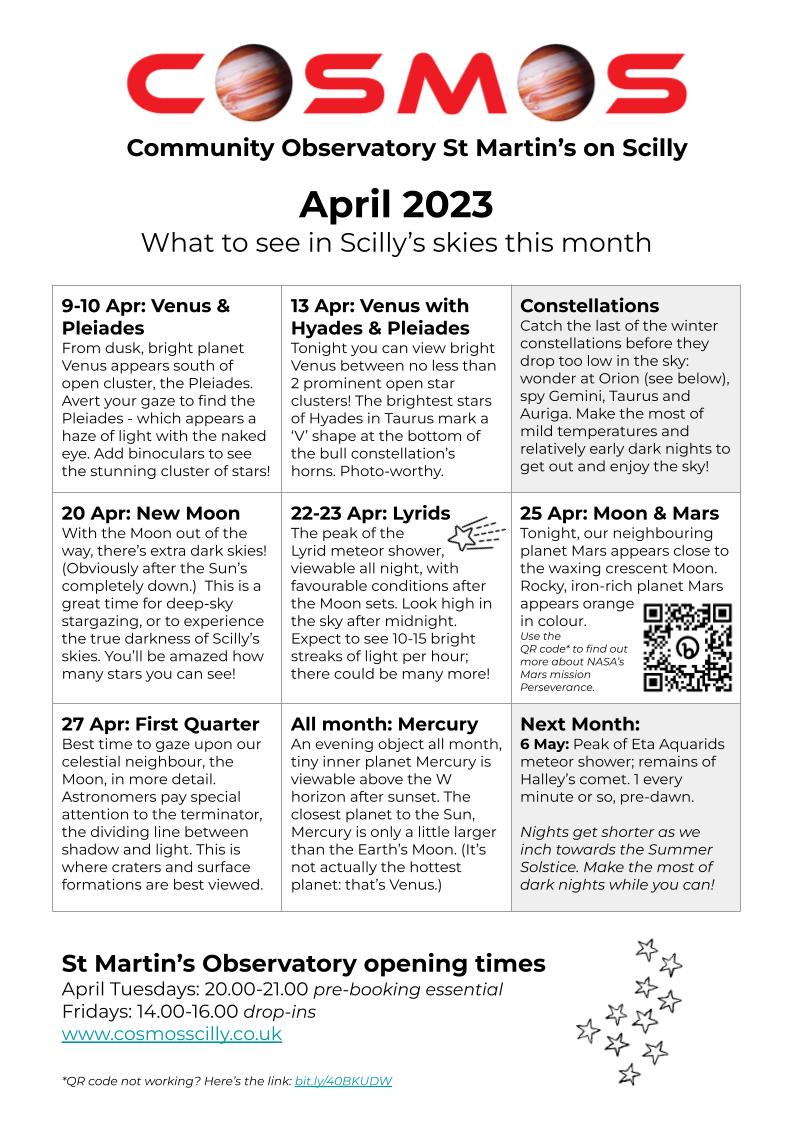
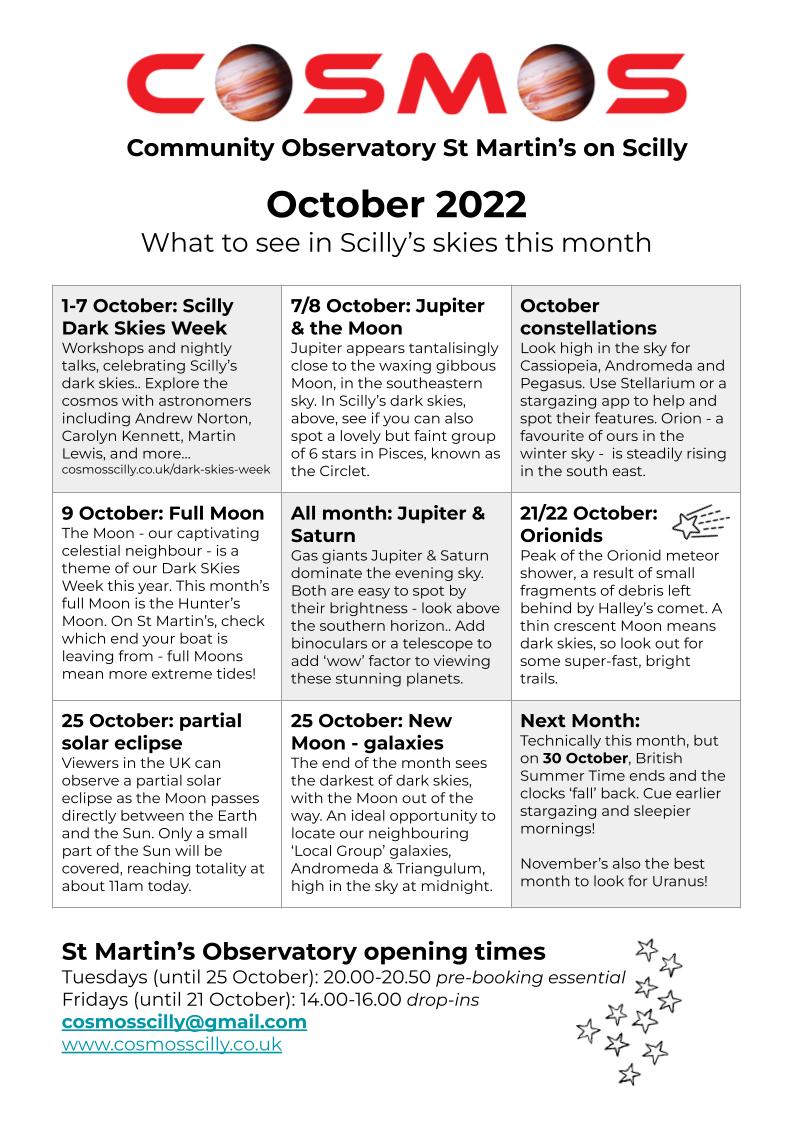
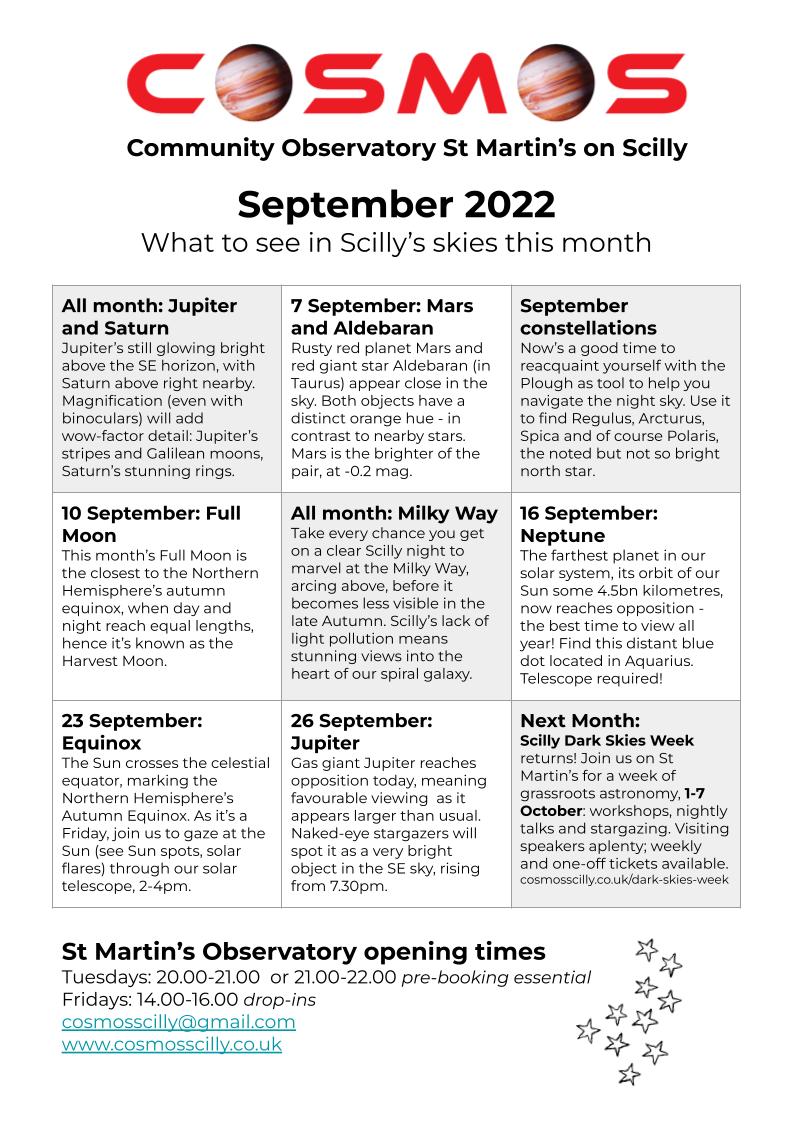



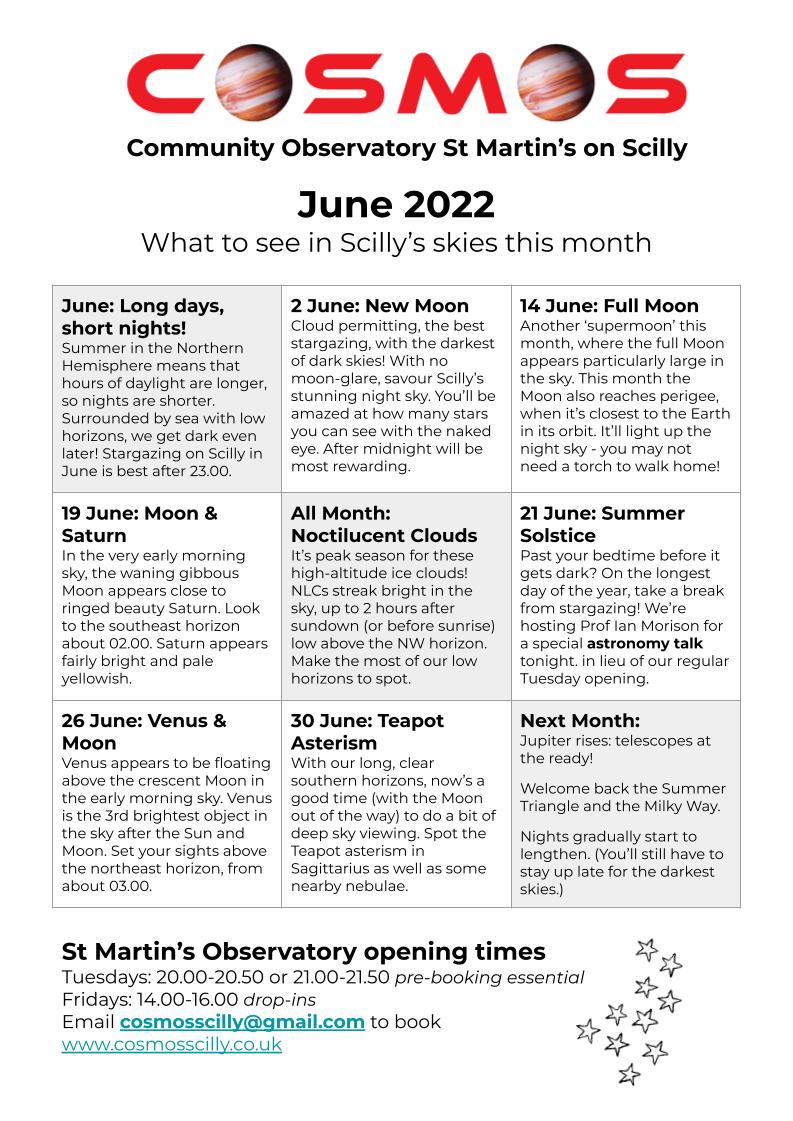

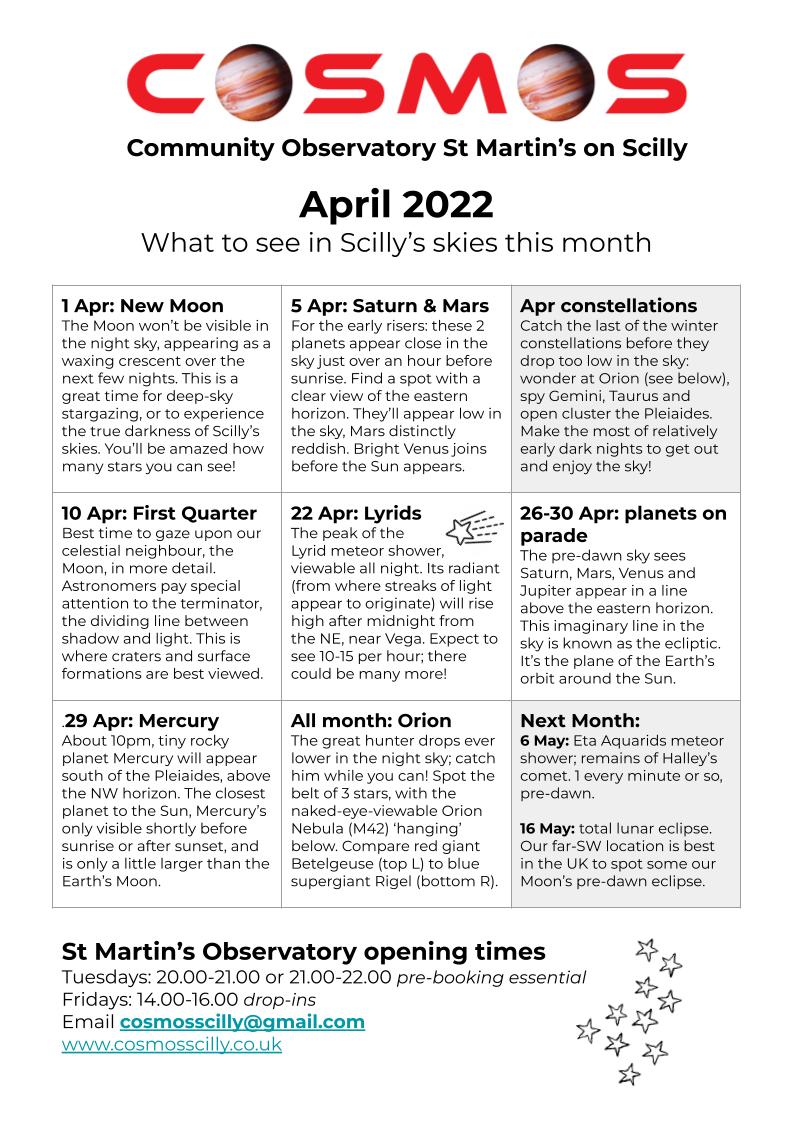
 RSS Feed
RSS Feed